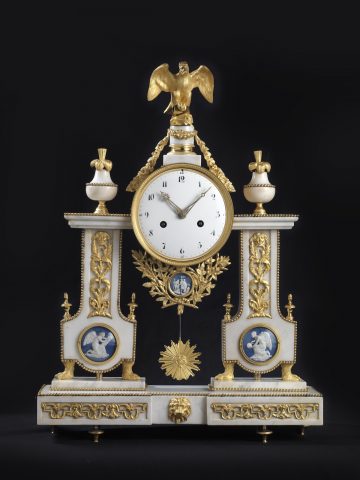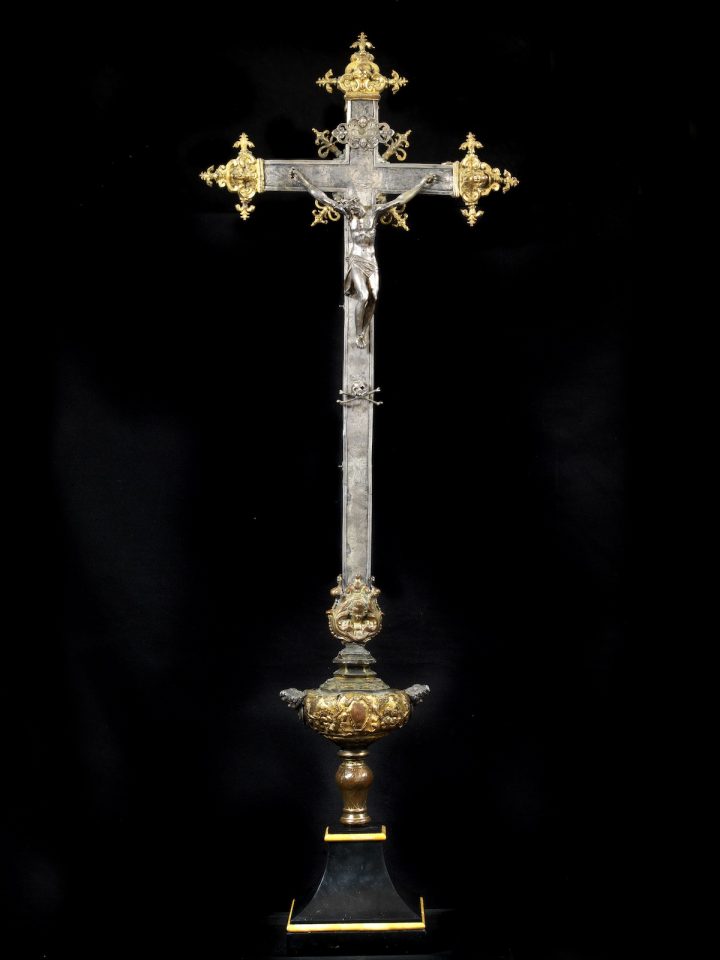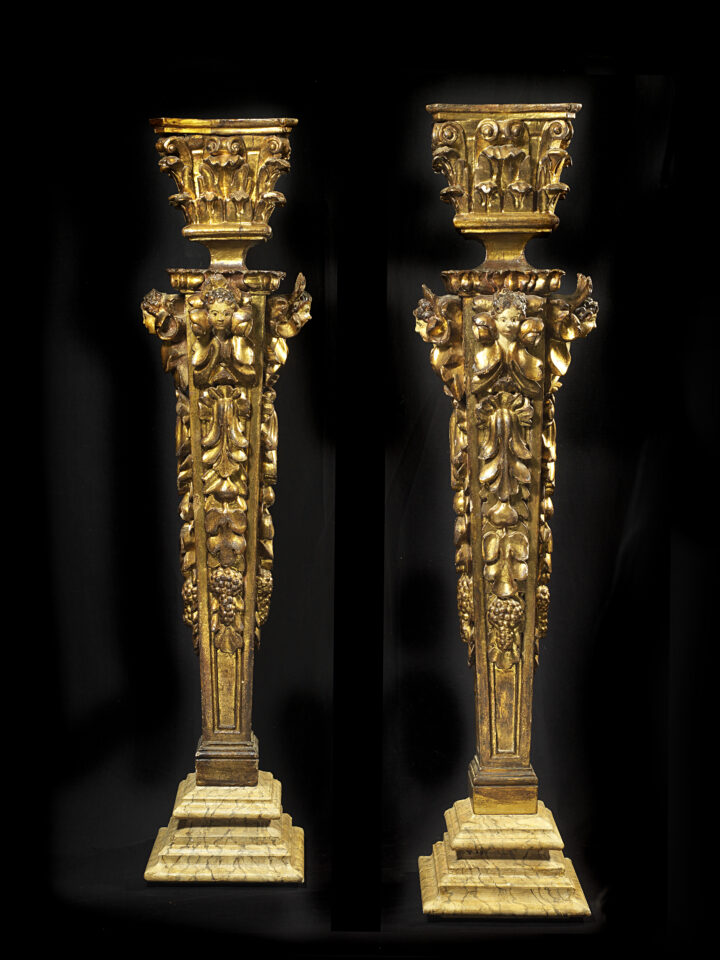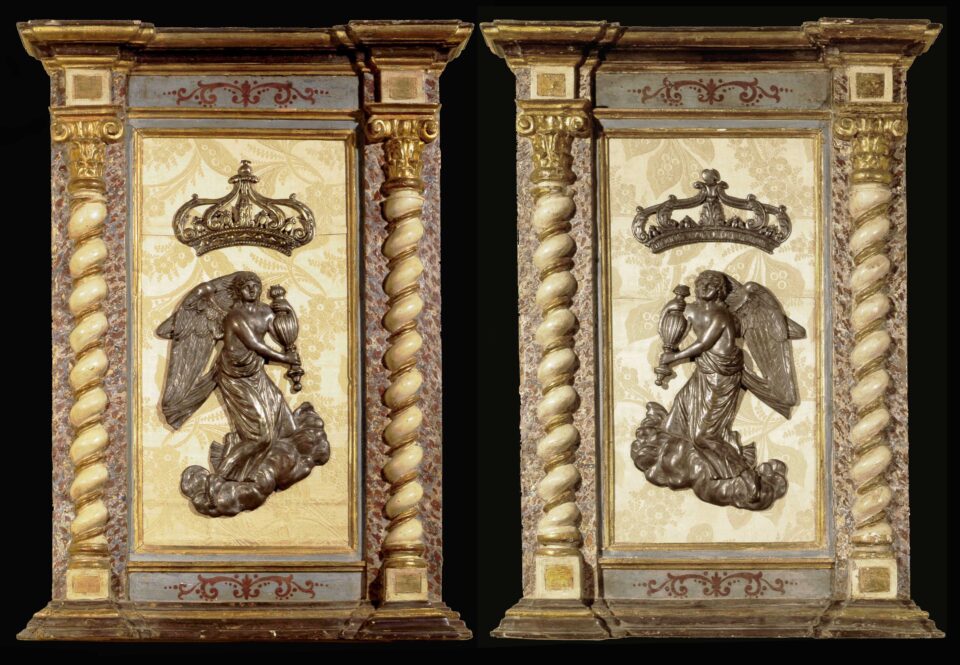“PORTICO-STYLE” PENDULUM CLOCK, EMPIRE STYLE
white marble with friezes in mercury gilt bronze
This elegant clock, made from white marble and mercury-gilt bronze, embodies the essence of the Empire style, which flourished in the early nineteenth century. While inspired by Greco-Roman classicism, this style is characterized by monumentality, elegance and a profusion of symbolic details, frequently associated with Napoleonic iconography. The central structure is dominated by a white-marble “portico”, which provides a solid base for the clock and support for the elaborate decorative elements on the sides. The circular dial features finely chiselled Arabic numerals and hands, and it is surmounted by two symmetrical bronze festoons. At the bottom, a sumptuous gilded bronze crown of leaves and branches encloses a circular medallion in cobalt blue enamel in the Wedgwood style. In the centre of the latter stands a delicate white relief depicting a mythological scene that evokes an ancient classical atmosphere. Above the dial, in a dominant position, stands a gilded bronze eagle, with its wings spreading in a majestic attitude – an iconic symbol of Napoleonic Empire.
On both sides of the central body of the clock, two white marble pillars rise, richly adorned with descending scroll and foliage motifs in gilded bronze appliqués. Each pillar is crowned by an urn-shaped pinnacle, accentuating the monumental appearance of the structure. Two additional Wedgwood-style medallions with a cobalt blue background and delicate seraphic figures in relief stand out at the base, adding a touch of grace and spirituality.
The white marble base of the clock features a horizontal band, which is finely decorated with gilded bronze scroll and leaf motives. At the centre of the plinth is a gilded bronze lion’s head, an emblem of strength, royalty, and vigilance. The distinctive pendulum, visible below the dial, is shaped like a radiant sun with a stylized face in the centre, which both emphasizes its function as a timekeeping device and adds a further symbolic element of light and magnificence.
France, first half of the 19th century
59 cm height





